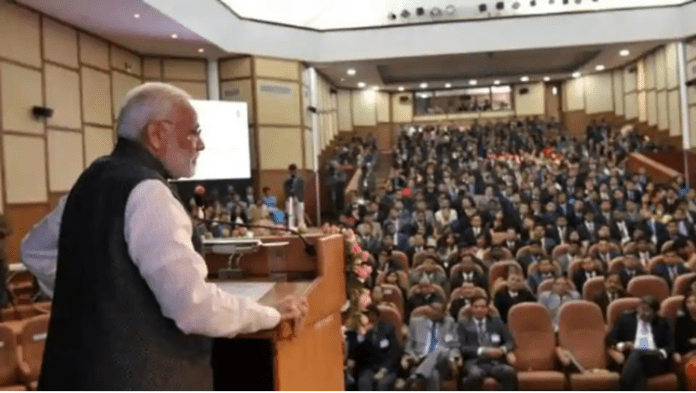The IAS can no more be treated in the framework of the Raj. Compared to the colonial-era relic, the ICS, it is a completely transformed unit
At the forthcoming annual general meeting of the Indian Civil and Administrative Services (Central) Association, scheduled for September 5, on the agenda is a proposal to change the association’s name to the Central (Indian Administrative Services (IAS) Association. Dropping the Indian Civil Services (ICS) from the nomenclature was long overdue. This would set aside some of the anomalies of the colonial-era ICS and IAS forever.
First, contrary to what many commentators still believe, the IAS was not instituted by the colonial rulers. Rather, the then secretary of state wanted to end the covenant of the civilians well before the transfer of power. It was Sardar Vallabhbhai Patel, who, as the interim home minister of the transition government, decided to create the IAS. This had the endorsement of eight of the 11 provinces in British India. Punjab, Bengal and Sindh were the three states that opposed his proposal as their political leaderships did not see their future with India. Patel launched IAS with the stirring words: “You will not have a united India, unless you have a good All India service, which has the Independence to speak out its mind.”
Induction into the IAS started in 1948, and it had a different mandate from its earlier avatar. The two guiding leitmotifs were: Unity of India and independence of mind. While the former is clearly understood, the latter did not mean that service members were completely free to do anything of their choice. What it implies is that members of the service must put across their points of views without fear or favour, and must be non-partisan in their approach. In fact, Article 311, which gives security to the civil service members, has hardly any parallel in the world. It means that the service members are free to give their viewpoints, but they must also accept the mandate of the political executive as envisaged by the Constitution. All new entrants to the civil services take an oath, or make a solemn affirmation to this treatise framed under the chairmanship of BR Ambedkar.
It’s also the time to break the myth that the ICS was the epitome of good governance. This is clear from the representations ICS members made to the secretary of state regarding supersession, adverse entries and unfair comparisons. In 1947, there was considerable resentment among the Punjabis against Lt Governor Evan Meredith Jenkins, who was junior to the financial commissioner. Many field officers felt that Jenkins conveyed to the Viceroys (Wavell and Mountbatten) only what they wanted to hear. Again, the unfair treatment meted out to Surendra Nath Banerjee and the first set of Indian officers has been well-documented.
I would go as far as to say that the IAS is a cut above the ICS. It attracts the best and the brightest women and men. The ICS was a misogynist organisation, which refused to allow women into its fold. In fact, when the first woman IAS officer Anna Rajam Malhotra (nee George) cleared the exam in 1951, the four-member board of the Union Public Service Commission (all ex-ICS officers, led by Chairman RN Banerjee) tried their best to dissuade her from joining the service. But having won her spurs – in horse-riding as well as pistol-shooting, which were mandatory in those days – she got her first posting. Now, on average, women constitute over one-third of the strength of an IAS batch.
Also Read: Good news for Apple fans! New iPhone SE now assembled in India, arriving soon
It must be said that because the brightest and the best minds join the civil services, one can, and should, expect them to improve systems, deliver better results on the ground and strive for excellence as well as transparency. But it should also be kept in mind that they are not magicians. The context and vision are the driving force. Fortunately for us, Prime Minister Narendra Modi, during his address to the officer trainees at the Statue of Unity last year, gave the civil services a clear mandate. This, he said, was “to fulfil the dream of a New India with the 21st-century thinking … dreams are indispensable in our bureaucracy – a bureaucracy that is constructive, imaginative, innovative, proactive and polite, professional and progressive, energetic and enabling, efficient and effective, transparent and tech enabled the civil services can, and will deliver in a time frame.”
In delinking our name from the ICS, the IAS has announced, once and for all, that we cannot be treated in the framework of the Raj. Like the Ship of Theseus, we have been completely transformed–our mandate, outreach, commitment, professionalism as well as the values inculcated in the academy–named after Lal Bahadur Shastri–are quite different from the ICS’s syllabus or the first decade when training took place in Delhi’s Metcalfe House.
We have moved ahead a long way and we have moved away. We are now proud to say that we don’t any longer need to be tied to the apron strings of the colonial service.


